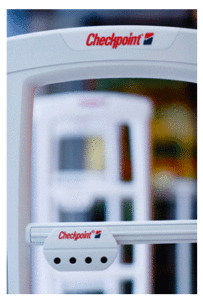 Reviewing your store policies today and training your employees about the ramification of not following them properly is imperative. The consequences of not following those policies properly are too costly to postpone. Employees, as they are human, try to use shortcuts or in some instances, take the easy way out while doing some chores without thinking it may affect the bottom line at the end of the day. Profits for a store cannot be thought of as profits for the owner only, employment and benefits for the employees are inherently tied to those of the owner. If the owner must close the store for loses, the employees lose as well.
Reviewing your store policies today and training your employees about the ramification of not following them properly is imperative. The consequences of not following those policies properly are too costly to postpone. Employees, as they are human, try to use shortcuts or in some instances, take the easy way out while doing some chores without thinking it may affect the bottom line at the end of the day. Profits for a store cannot be thought of as profits for the owner only, employment and benefits for the employees are inherently tied to those of the owner. If the owner must close the store for loses, the employees lose as well.
Is it time then to review the policies and procedures the employees must follow while working at the store? You bet. If you do not think it is necessary to do a complete training workshop today, you must at least remind them of the policies, the procedures, and their responsibility to stay calm and professional at all times. Safety plays an important topic when talking about staying calm and professional while dealing with a shoplifter. Their safety and the safety of the customers cannot be jeopardized by carelessness or by improper behavior. By reminding them of this important and oftentimes forgotten topic, you are ensuring fatalities or brutal behavior do not occur at your store.
Click here to read about a news story and the fact that many retail shop owners deal with this issue on a daily basis. The return policies of any store have to be continuously checked and tried to asses their effectiveness, otherwise, you may be dealing with a deficit you cannot recover from.
 Shoplifters seem to be getting bolder than ever. Much of this is greed. Many people simply want stuff and have no moral compass. Others are emboldened by lax law enforcement or Politicians that pass laws that do little to protect you. Whatever the case be, it has a negative impact on Retailers. We are expected to open our stores, compete, pay employees, pay expenses, taxes…. And make a profit. Shoplifting theft is yet another pressure on us.
Shoplifters seem to be getting bolder than ever. Much of this is greed. Many people simply want stuff and have no moral compass. Others are emboldened by lax law enforcement or Politicians that pass laws that do little to protect you. Whatever the case be, it has a negative impact on Retailers. We are expected to open our stores, compete, pay employees, pay expenses, taxes…. And make a profit. Shoplifting theft is yet another pressure on us. Summertime is here and now is the time for children to rejoice and shout for glee as most are finishing up their school year. Put away the pens and paper and lunchboxes and prepare to enjoy the warm, sunny days. No Mr. and Ms. Retailer, not YOU, the children. The moment the schools let out is the moment you should be preparing to roll out the merchandise for the next school year. Wait too long and you will be a step or two behind your competition.
Summertime is here and now is the time for children to rejoice and shout for glee as most are finishing up their school year. Put away the pens and paper and lunchboxes and prepare to enjoy the warm, sunny days. No Mr. and Ms. Retailer, not YOU, the children. The moment the schools let out is the moment you should be preparing to roll out the merchandise for the next school year. Wait too long and you will be a step or two behind your competition. Holiday sales events and promotions are intended to boost retail sales. The obvious big event is the Christmas holiday season which seems to begin in October for many retailers. The event carries into January when merchandise goes clearance as retailers prepare for the next holiday event and the beginning of the Spring sales lines.
Holiday sales events and promotions are intended to boost retail sales. The obvious big event is the Christmas holiday season which seems to begin in October for many retailers. The event carries into January when merchandise goes clearance as retailers prepare for the next holiday event and the beginning of the Spring sales lines. The scary shoplifting cases we hear and see on TV, or on newspapers in the United States, are becoming too commonplace to rendered us shocked.
The scary shoplifting cases we hear and see on TV, or on newspapers in the United States, are becoming too commonplace to rendered us shocked.  Recently, I conducted an employee theft investigation for a client. I want to share some of the findings from that investigation in the hopes that you can use it to review your own potential for losses.
Recently, I conducted an employee theft investigation for a client. I want to share some of the findings from that investigation in the hopes that you can use it to review your own potential for losses. 
 Sometime this year you will most likely be conducting an inventory. Some stores even conduct multiple inventories when they have high stock shortage results. While it does not necessarily translate to poor results, a lack of adequate preparation can have an impact on the final shortage numbers.
Sometime this year you will most likely be conducting an inventory. Some stores even conduct multiple inventories when they have high stock shortage results. While it does not necessarily translate to poor results, a lack of adequate preparation can have an impact on the final shortage numbers.